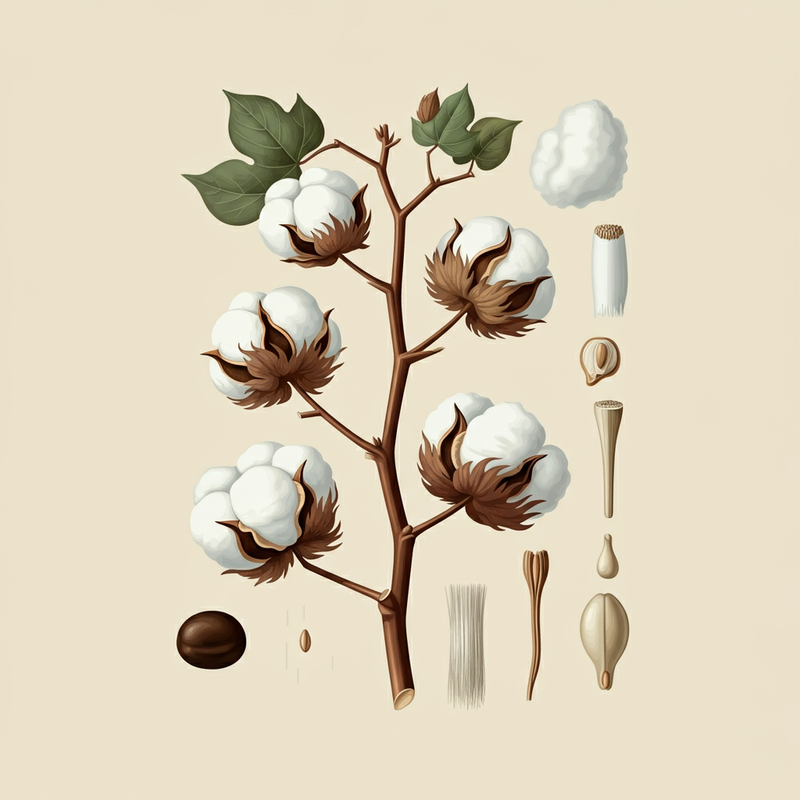
The cotton is changed into fabric in Lancashire. You fork out shilling wages in lieu of Indian pennies towards your personnel.
Cotton linters, the small fibers left on cottonseeds just after ginning, may possibly seem like a byproduct to start with glance, However they keep huge value throughout several industries. These fibers are adaptable, and biodegradable, and Perform a vital role in manufacturing a wide range of products and solutions, from higher-high quality paper to non-public care goods.
1. Typical information and facts: Cotton linters are quick fibres (fuzz) Situated around cotton seeds. These fibres are separated from cotton seeds using a special equipment, named linter equipment or delinting equipment. Cotton fibres collected after initial move utilizing the delinting machine are identified as “to start with Minimize linters” and they're named “next Slice linters” soon after 2nd go in the identical equipment.
Asiatic cotton fibres are typically shorter and coarser than those of Upland, Egyptian, or Pima cotton. The fibre length ordinarily ranges from 0.
Morphology from the fibers, various when compared to the certainly one of cotton linters, will allow having high mechanical and physical properties demanded with the finish utilization of paper for some Specific properties such as double fold, strength, opacity and printing properties.
The arrival of the Industrial Revolution in Britain delivered an excellent Improve to cotton manufacture, as textiles emerged as Britain's primary export. In 1738, Lewis Paul and John Wyatt, of Birmingham, England, patented the roller spinning device, as well as the flyer-and-bobbin system for drawing cotton to a more even thickness applying two sets of rollers that traveled at diverse speeds.
Coloured cotton produces eco-helpful textiles like natural and organic garments, residence textiles, and artisanal fabrics. Its all-natural colours lend themselves to items that emphasise sustainability and ethical manufacturing.
[40] The creation of cotton, which can have largely been spun from the villages and then taken to cities in the shape of yarn being woven into cloth textiles, was Innovative via the diffusion on the spinning wheel throughout India Soon before the Mughal period, reducing the costs of yarn and supporting to extend desire for cotton. The diffusion of your spinning wheel, and also the incorporation with the worm gear and crank deal with into your roller cotton gin, led to greatly expanded Indian cotton textile manufacturing during the Mughal period.[forty one]
Cotton's purely natural Homes lead to its moisture-wicking capabilities, guaranteeing that sweat is drawn far from the human body, improving ease and comfort for the duration of Bodily things to do.
As customers shift towards natural and organic and pure products and solutions, cotton linters present you with a sustainable option to artificial fibers, aligning Using the thoroughly clean attractiveness craze.
Key refining running parameters are certain Strength demanded for fibres cutting and pulp refining is 350 kWh/ADT and drainage index of refined pulp is fifty °SR just after pulp screening.
Denim fibers like these could acquire on another person's outfits and become analyzed by forensic experts Lint is beneficial to look at in forensic science mainly because it is accrued after some time, and because the fibers lose from garments adhere to not merely that garments, but additionally other particles to which the provider is exposed. The lint on an individual's clothes is consequently very likely to include material transferred from the varied environments by which that particular person has handed,[28] enabling forensic examiners to collect and examine lint to determine the movements and actions from the wearer.
Lint was used as being a method of wound remedy for cuts and sores as early as 1500 BC and as recently linters cotton as the American Civil War.[33] Lint used specifically for dealing with wounds was sometimes often called charpie.
In 1860 the slogan "Cotton is king" characterised the Frame of mind of Southern leaders toward this monocrop in that Europe would guidance an unbiased Confederate States of America in 1861 as a way to secure the provision of cotton it required for its very big textile industry.[fifty six]